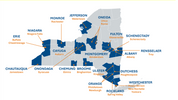President Trump signed the Families First Coronavirus Response Act on March 18. It will take effect on April 2, and will remain in effect until December 31, 2020.
This new law has some dramatic provisions which will affect employers. These are a broad expansion of the Family Medical Leave Act (“FMLA”) to provide Emergency FMLA benefits, and a requirement for mandatory paid sick leave.
A. FMLA Emergency Leave Expansion
1. This law expands FMLA coverage. FMLA coverage would change from employers with 50 or more employees to employers with fewer than 500 employees. Any employee who has worked for the employer for at least 30 days prior to the leave is covered. The Secretary of Labor can exclude healthcare providers and emergency responders from this leave, and can exempt small businesses with fewer than 50 employees if the required leave would jeopardize the viability of their business.
2. Anyone employed for at least 30 days may take up to 12 weeks of leave to allow an employee who cannot work or telework to care for a child, if the child’s school or place of care is closed or the childcare provider is unavailable due to a public health emergency
3. During the first 10 days an employee may use any accrued paid leave (such as vacation or sick leave). After the first 10 days the employer generally must pay employees at two-thirds the employee’s regular rate, limited to $200 per day and $10,000 in the aggregate per employee.
4. Part time employees are paid based on the average number of hours the employee worked for the six months prior to the leave. Part time employees who worked less than six months are paid based on average number of hours the employee would normally be scheduled to work.
5. Employers with 25 or more employees must return an employee to the same or equivalent position upon the return to work. Employers with fewer than 25 employees are generally excluded from this requirement if the employee’s position no longer exists due to an economic downturn or other circumstances caused by a public health emergency. An employer must make reasonable attempts to return the employee to an equivalent position for up to a year following the employee’s leave.
B. Emergency Paid Sick Leave Act
1. This new law provides paid sick leave for an employee who is:
Subject to a federal, state or local quarantine or isolation order related to COVID-19;
- Advised by a health care provider to self-quarantine due to COVID-19 concerns;
- Experiencing COVID-19 symptoms and seeking medical diagnosis;
- Caring for an individual (not limited to family members) who is subject to a government quarantine or isolation order, or is advised by a health care provider to self-quarantine due to COVID-19 concerns;
- Caring for the employee’s child if the child’s school or place of care is closed or the child’s care provider is unavailable due to public health emergency; or
- Experiencing any other substantially similar condition specified by the Secretary of Health and Human Services in consultation with the Secretary of the Treasury and the Secretary of Labor.
2. Employers with fewer than 500 employees must provide all full-time employees with 80 hours of paid sick leave at the employee’s regular rate for the first three reasons listed above, or two-thirds the employee’s regular rate for the last three reasons listed above. Employers who are healthcare providers or emergency responders may choose not be covered by this provision.
3. Paid sick leave wages are limited to $511 per day up to $5,110 total per employee for their own use up to $200 per day up to $2,000 total to care for others and any other substantially similar condition.
4. Employers who are required to provide the Emergency Paid Sick Leave and Emergency Paid Family and Medical Leave are entitled to tax credits against the employer portion of Social Security taxes. Employers will be reimbursed if their costs for sick leave or family leave exceed the taxes they would owe. There are some limits on these tax credits.
Attorney Advertising
President Trump signed the Families First Coronavirus Response Act on March 18. This new law has some dramatic provisions which will affect employers. These are a broad expansion of the Family Medical Leave Act (“FMLA”) to provide Emergency FMLA benefits, and a requirement for mandatory paid sick leave.
 unknownx500
unknownx500


/Passle/5dc1896e8cb6240888194e3d/SearchServiceImages/2024-06-27-22-02-47-871-667de187e23b3b7873f019cc.jpg)
/Passle/5dc1896e8cb6240888194e3d/SearchServiceImages/2024-06-04-15-59-39-848-665f39ebae6e55284c9f90e3.jpg)
/Passle/5dc1896e8cb6240888194e3d/SearchServiceImages/2024-04-24-15-36-20-467-662926f46517ac4d924fc898.jpg)





